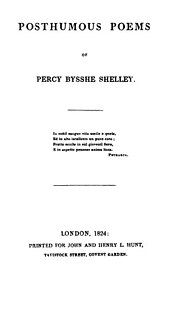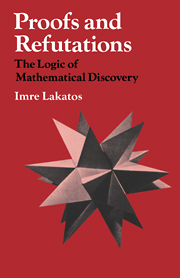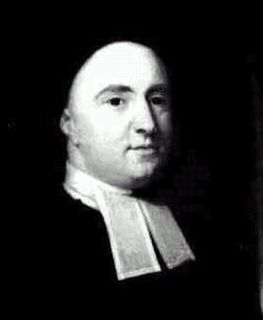 W
WDialogue is a written or spoken conversational exchange between two or more people, and a literary and theatrical form that depicts such an exchange. As a philosophical or didactic device, it is chiefly associated in the West with the Socratic dialogue as developed by Plato, but antecedents are also found in other traditions including Indian literature.
 W
WThe Academica is work in a fragmentary state written by the Academic Skeptic philosopher, Cicero, published in two editions. The first edition is referred to as the Academica Priora. It was released in May 45 BCE and comprised two books, known as the Catulus and the Lucullus. The Catulus has been lost. Cicero subsequently extensively revised and expanded the work, releasing a second edition comprising four books. Except for part of Book 1 and 36 fragments, all of the second edition has been lost. The second edition is referred to as Academica Posteriora or Academica Liberi or Varro.
 W
WAlciphron, or The Minute Philosopher is a philosophical dialogue by the 18th-century Irish philosopher George Berkeley wherein Berkeley combated the arguments of free-thinkers such as Mandeville and Shaftesbury against the Christian religion. It was first published in 1732.
 W
WThe Bhagavad Gita, often referred to as the Gita, is a 701-verse Hindu scripture that is part of the epic Mahabharata, dated to the second century BCE. It is considered to be the one of the main holy scriptures for Hinduism, the world's oldest and the third largest religion.
 W
WColóquios dos simples e drogas he cousas medicinais da Índia e assi dalgũas frutas achadas nella onde se tratam algũas cousas tocantes a medicina, pratica, e outras cousas boas pera saber is a work of great originality published in Goa on 10 April 1563 by Garcia de Orta, a Portuguese Jewish physician and naturalist, a pioneer of tropical medicine.
 W
WDialogues Concerning Natural Religion is a philosophical work by the Scottish philosopher David Hume, first published in 1779. Through dialogue, three philosophers named Demea, Philo, and Cleanthes debate the nature of God's existence. Whether or not these names reference specific philosophers, ancient or otherwise, remains a topic of scholarly dispute. While all three agree that a god exists, they differ sharply in opinion on God's nature or attributes and how, or if, humankind can come to knowledge of a deity.
 W
WThe Consolation of Philosophy is a philosophical work by the Roman statesman Boethius, written around the year 524. It has been described as the single most important and influential work in the West on Medieval and early Renaissance Christianity, as well as the last great Western work of the Classical Period.
 W
WDe Constantia in publicis malis was a philosophical dialogue published by Justus Lipsius in two books in 1583. The book, modelled after the dialogues of Seneca, was pivotal in establishing an accommodation of Stoicism and Christianity which became known as Neostoicism. De Constantia went through over eighty editions between the sixteenth and eighteenth centuries.
 W
WConversations with God (CwG) is a sequence of books written by Neale Donald Walsch. It was written as a dialogue in which Walsch asks questions and God answers. The first book of the Conversations with God series, Conversations with God, Book 1: An Uncommon Dialogue, was published in 1995 and became a publishing phenomenon, staying on The New York Times Best Sellers List for 137 weeks. The succeeding volumes in the ten book series also appeared prominently on the List.
 W
WThe Dialogue Concerning the Two Chief World Systems is a 1632 Italian-language book by Galileo Galilei comparing the Copernican system with the traditional Ptolemaic system. It was translated into Latin as Systema cosmicum in 1635 by Matthias Bernegger. The book was dedicated to Galileo's patron, Ferdinando II de' Medici, Grand Duke of Tuscany, who received the first printed copy on February 22, 1632.
 W
WThe Dialogue in Hell Between Machiavelli and Montesquieu (in the original French Dialogue aux enfers entre Machiavel et Montesquieu ou la politique de Machiavel au XIXe siècle) is a political satire written by French attorney Maurice Joly in protest against the regime of Napoleon III, a.k.a. Louis-Napoléon Bonaparte who ruled France from 1848-1870. It was translated into English in 2002. Small portions were translated in 1967 as an appendix to Norman Cohn's Warrant for Genocide, which identifies it as the main source of the later Protocols of the Elders of Zion.
 W
WA Dialogue of Comfort against Tribulation is a work that was written by St. Thomas More while imprisoned in the Tower of London in 1534.
 W
WThe Doctor and Student: Or Dialogues between a Doctor of Divinity and a Student in the Laws of England is a legal treatise by Christopher St. Germain, first published in the early 16th century. As its name suggests, the work is structured as a set of dialogues between the eponymous doctor, a doctor of divinity; and a student of the English common law. Doctor and Student explores the relationship between the common law and equity and distinguishes a number of sources of legal principles. It was an important text for English law students at least until William Blackstone's Commentaries on the Laws of England was published in the mid-18th century.
 W
WGödel, Escher, Bach: an Eternal Golden Braid, also known as GEB, is a 1979 book by Douglas Hofstadter. By exploring common themes in the lives and works of logician Kurt Gödel, artist M. C. Escher, and composer Johann Sebastian Bach, the book expounds concepts fundamental to mathematics, symmetry, and intelligence. Through short stories, illustrations, and analysis, the book discusses how systems can acquire meaningful context despite being made of "meaningless" elements. It also discusses self-reference and formal rules, isomorphism, what it means to communicate, how knowledge can be represented and stored, the methods and limitations of symbolic representation, and even the fundamental notion of "meaning" itself.
 W
WThe Ipuwer Papyrus is an ancient Egyptian hieratic papyrus made during the Nineteenth Dynasty of Egypt, and now held in the Dutch National Museum of Antiquities in Leiden, Netherlands. It contains the Admonitions of Ipuwer, an incomplete literary work whose original composition is dated no earlier than the late Twelfth Dynasty of Egypt.
 W
WJulian and Maddalo: A Conversation (1818–19) is a poem in 617 lines of enjambed heroic couplets by Percy Bysshe Shelley published posthumously in 1824.
 W
WJulius Excluded from Heaven is a dialogue that was written in 1514, commonly attributed to the Dutch humanist and theologian Desiderius Erasmus. It involves Pope Julius II, who had recently died, trying to persuade Saint Peter to allow him to enter Heaven by using the same tactics he applied when alive. The dialogue is also supplemented by a "Genius" who makes wry comments about the pope and his deeds.
 W
WMaster Polikarp's Dialog with Death is a late medieval dialog in verse, written probably in the early 15th century. Master Polikarp's Dialog with Death is now regarded as one of the most important examples of medieval poetry in the Polish language. The work is patterned after a 12th century Latin poem Dialogus mortis cum homine, and other Latin language publications, popular in medieval Europe. Its author is unknown, but after discovering the complete, printed version from 1542 some historians speculate that Mikołaj Rej has re-written the original text for print.
 W
WA Dialogue on Personal Identity and Immortality is a book by the philosopher John Perry. It has been translated into Spanish, Chinese, Persian and Korean.
 W
WProofs and Refutations: The Logic of Mathematical Discovery is a 1976 book by philosopher Imre Lakatos expounding his view of the progress of mathematics. The book is written as a series of Socratic dialogues involving a group of students who debate the proof of the Euler characteristic defined for the polyhedron. A central theme is that definitions are not carved in stone, but often have to be patched up in the light of later insights, in particular failed proofs. This gives mathematics a somewhat experimental flavour. At the end of the Introduction, Lakatos explains that his purpose is to challenge formalism in mathematics, and to show that informal mathematics grows by a logic of "proofs and refutations".
 W
WThe Song Celestial: A Poetic Version of the Bhagavad Gita is a translation of the Bhagavad Gita from Sanskrit into English by Sir Edwin Arnold, first published in 1885. The translation following The Light of Asia, his narrative-poem of the Lalitavistara Sūtra. It is dedicated to India with the following preface:So have I read this wonderful and spirit-thrilling speech, By Krishna and Prince Arjuna held, discoursing each with each; So have I writ its wisdom here, - its hidden mystery, For England; O our India! as dear to me as She!
 W
WThree Dialogues between Hylas and Philonous, or simply Three Dialogues, is a 1713 book on metaphysics and idealism written by George Berkeley. Taking the form of a dialogue, the book was written as a response to the criticism Berkeley experienced after publishing A Treatise Concerning the Principles of Human Knowledge.
 W
WThe Discourses and Mathematical Demonstrations Relating to Two New Sciences published in 1638 was Galileo Galilei's final book and a scientific testament covering much of his work in physics over the preceding thirty years. It was written partly in Italian and partly in Latin.